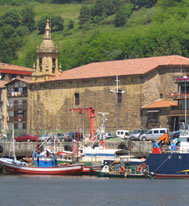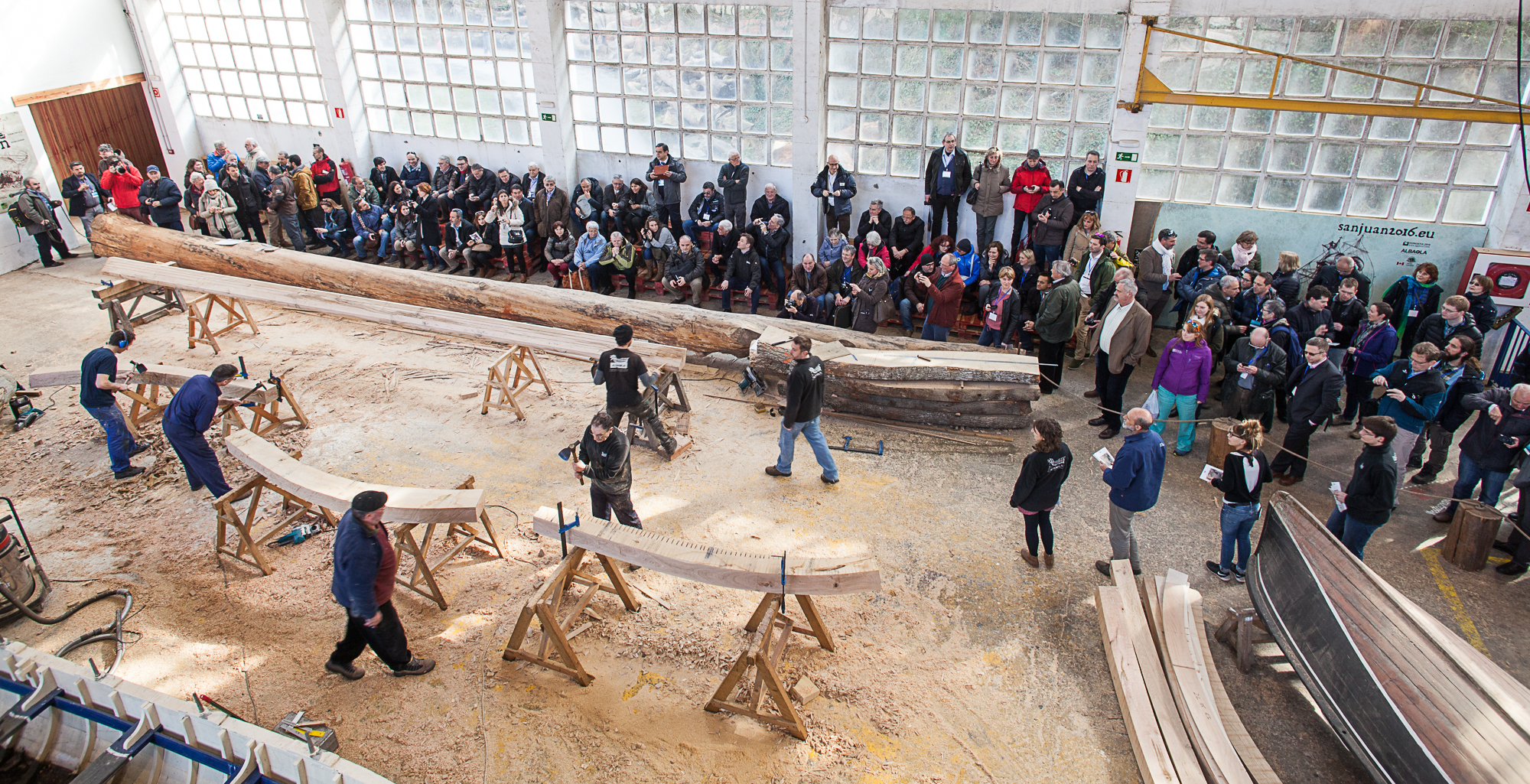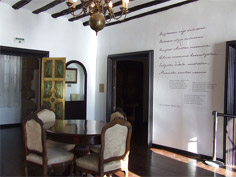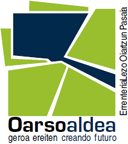
- Home
- Explore our area
- Our towns
- Pasaia
- Pasai San Pedro
- San Pedro Parish Church
San Pedro Parish Church

San Pedro Parish Church, with its sober lines and compact aspect, was partly built with stones from the former construction. The first church stood on the site now occupied by the neighbourhood cemetery. It gained independence from San Vicente Parish Church in Donostia-San Sebastián in the mid-15th Century on proposal by the locals; remains of the former church are the entrance door to the churchyard (Gothic doorway, Romanesque window) and other elements (openings and walls).
It has one single storey facing towards the east, formerly the largest part of the village and site of the no longer standing Donostia-San Sebastián tower, observatory and battery. To the north, the ancient church on the hillside; to the west, the remains of the village and the King's Shipyard and, to the south, a long stretch of sand now occupied by Trintxerpe Bay.
The Church has a polygonal apse with a vestry on either side and three naves of equal height, although the central one is much wider than the other two. The space is divided into three parts by four columns, with a presbytery and choir at the rear. This kind of pillar church is typical of the Middle Ages.
The building has two entrances, one at the rear, and the other beside the epistle level with the second part. The choir occupies the smallest part, while the altar stands on five steps and the side passageway leads to the vestries.
A great deal of the material used in its construction came as we know from remains of the former church: "the stone seats will be removed from the presbytery -of the former parish church-... and used to make the walls of the cemetery at the new church... serving as parapet and seating for people and preventing them and especially children from falling into the sea".
Outside, seats were installed as protection, permitting people to enjoy the sea without falling, given that at that time there was no promenade as we know it today.
Its interior is characterised by sobriety and humility. This is obvious from the simplicity of its Tuscan order pillars and columns and their high Baroque bases, distributed entablature-style round the temple, a real ornamental luxury. Only a fine and well-made moulding surrounds the basket-handle arch of the choir, with spandrels bearing the name of the artist who completed the work: "MANUEL MARTIN CARRERA ME HIZO Año 1774" ("MARTIN CARRERA MADE ME Year 1774").
The ornamental nudity of the interior starkly contrasts with the skill and wealth of the facade. To achieve this, the maestro followed a pattern widely used in the Spanish Renaissance period, proceeding to endow it with spacious proportions. A semicircular arch, supported by giant pilasters, stands out for the fact that gives the impression of height to the entire cubic shape of the building, stressed by the ascending effect of the crowning tympanum, opening out in mixed lines towards an oval medallion standing vertically over the biggest axis with the tiara and the keys.
Both the volumes and surfaces of the parish church are extremely simple and defined in style. Here the perfect cube shape of the building dominates the tower attached to it. It is essential to point out the plastic expressiveness of the mortar, a relevant note in this work clearly influenced by neoclassical sensitivity. The fact that they underlined and increased the ornamental and decorative aspect of the north door, creating an urban compass or framework perfect for meetings of the faithful or passers-by, demonstrates that a certain amount of care was taken in the project to connect the external space with the building, thus creating intimacy and recollection.




















